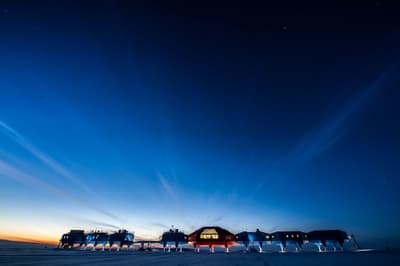A research station in Antarctica, the Halley VI, will be temporarily shut down for the second year in a row among concerns over deep, growing cracks in the ice shelf on either side of the facility, The Guardian reported. The station, which sits atop the nearly 500-foot thick Brunt ice shelf, is operated by the British Antarctic Survey (BAS).
Concern centers around two cracks: An ice chasm that was dormant for 35 years before beginning to expand in 2012, and that has accelerated its growth over the past seven months; and the “Halloween crack,” which appeared last October and has grown 31 miles, as well as widened, in the past year. BAS described the growing cracks as “a complex and unpredictable glaciological situation.”
Halley IV, which sits atop a floating ice shelf in the frozen Weddell Sea, has been closed since March for the Antarctic winter, but will reopen next month for research. The new decision means the Halley VI will be closed once again between March and November 2018. The station’s 14-person staff will be sent elsewhere on the continent or home to the United Kingdom, The Guardian reported.
“The safety of our staff is our priority in these circumstances,” Jane Francis, director of the British Antarctic Survey, said in a statement. “Because access to the station by ship or aircraft is extremely difficult during the winter months of 24-hour darkness, extremely low temperatures and the frozen sea, we will once again take the precaution of shutting down the station before the 2018 Antarctic winter begins.”
Earlier this year, the Halley VI was towed 14 miles inland in case the cracks continued to grow and the station was separated from the ice shelf in a calving event. Officials said they don’t plan to move the facility again.
“Eventually we expect the ice from [the previous site] to part company with the ice shelf and float off as an iceberg – but the question is essentially when is that going to happen, and whether there would be other changes in the ice shelf that we haven’t predicted that would [result],” said David Vaughn, director of science at BAS.




